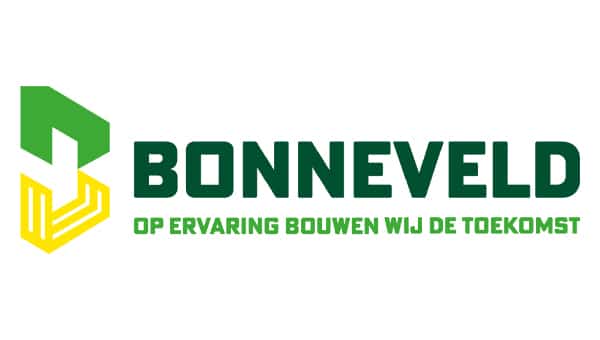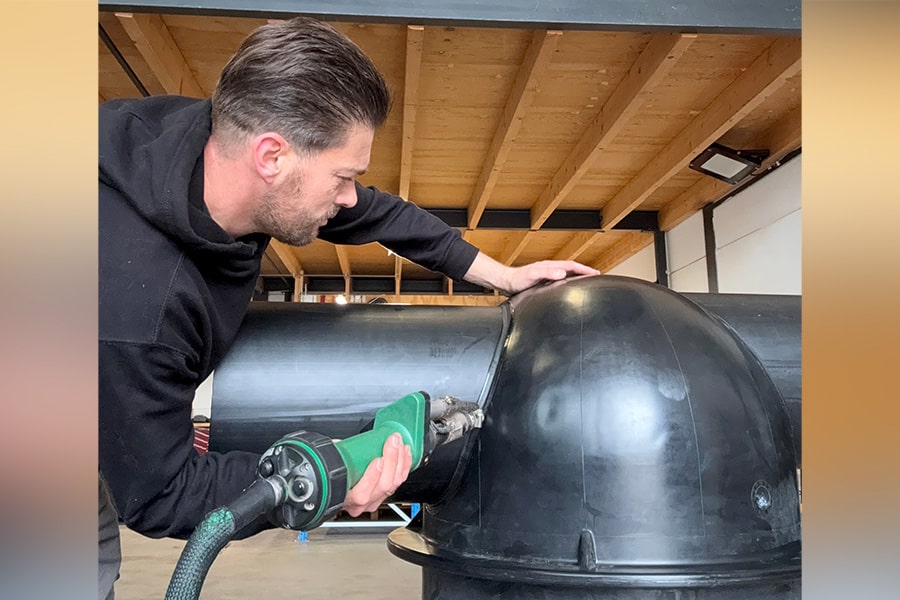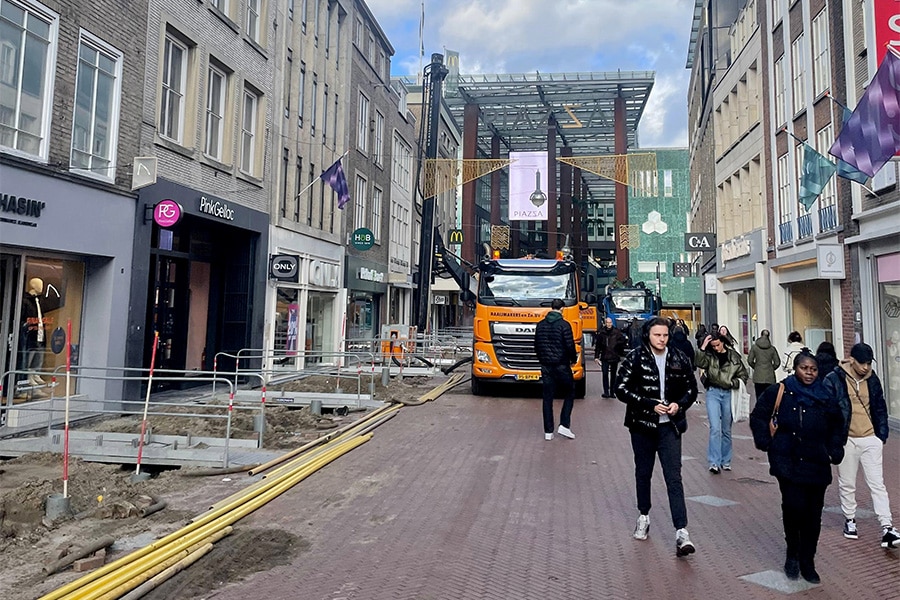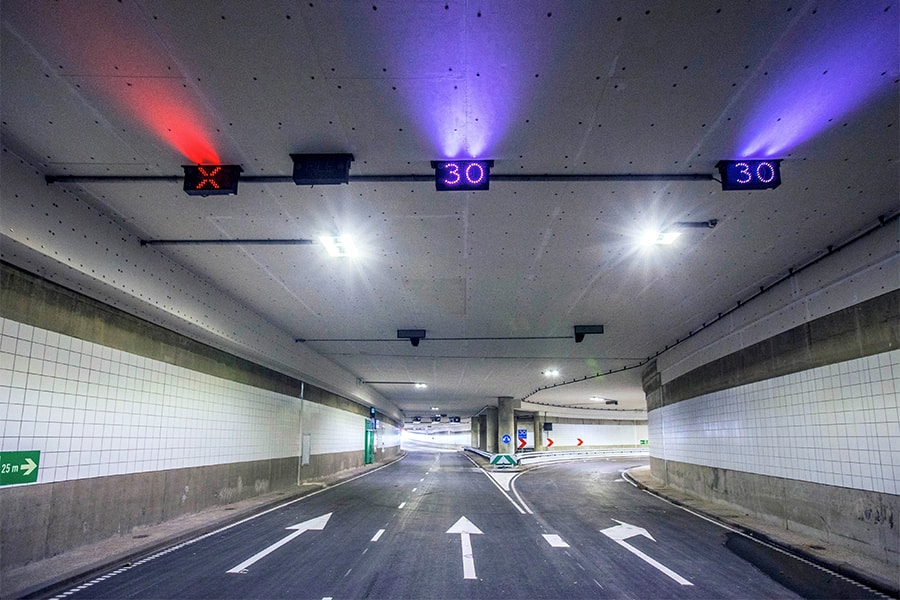
Groundbreaking recycling concept for challenging construction pit
In the north of the Netherlands, Franki Grondtechnieken, together with Bonneveld Aannemingsbedrijf, is realizing a challenging construction pit in den wet of 52 by 49 meters and as much as 20 meters deep. In it, 380 steel foundation piles are being drilled from a pontoon. What makes this civil project extra special is that the released grout slurry is collected in an inventive way, processed and separated again into the initial raw materials for reuse. This method also prevents large-scale culvert deployment, which in turn improves safety.
The building pit is formed by diaphragm walls as much as 1.5 meters thick and 35 meters deep. "For the necessary stability, 168 pieces of 15-strand anchors in three rows with a length varying between 50 and 65 meters," says Jan Leen van der Vlies, director of execution at Franki Grondtechnieken. "After installing the anchors, Bonneveld excavated the tub from a pontoon in the wet and sucked it out to 20 meters below ground level. Then the modular pontoon was converted to carry our 150-ton Fundex 3500 foundation crane. Plus some attachments, we are at a total weight of 180 tons on the pontoon. That requires a tight ballast schedule. We made stability calculations for all possible crane positions. By the way, earlier also for Bonneveld's excavators."

Nail Bed
A total of 380 foundation piles will be installed in the construction pit. "The piles are 20 rows wide and 19 rows thick spaced 2 meters apart. An underwater concrete floor is then poured at a depth of 20 meters and the piles still protrude about 3.5 meters above the floor. So when the tub is later drained, a kind of bed of nails will remain. It forms the foundation for the superstructure," explains Jan Leen. When drilling the piles, Franki uses a grout flush. "This is for several reasons. First, to provide the soil under the drill head with a higher pore pressure for better soil displacement. In addition, the flushing provides the necessary cooling for the drilling process and also for plastering the drilled wall. Furthermore, the grout flushing takes the loose parts drilled to the surface and finally, you can check the drilling process from the composition of the flushing."
Groutspoil prevented
When making a drilled foundation pile, a fraction of about 7 to 10 m3 of grout spoil is generally left at the bottom, a combination of cement, sand and water. "In this tub, that would be disastrous for the attachment of the underwater concrete to the piles," knows Harry van der Heiden, director of Bonneveld Aannemingsbedrijf. "After all, the piles have to be spotless to prevent leaks or worse." He calculates that after installing the 380 piles, some 3,000 m3 of grout spoil would remain in the tub. "Whether the foundation piles are installed from ground level or from a pontoon, the construction pit must be completely free of grout before the underwater concrete floor can be poured. Therefore, we devised and further developed a solution together with Franki, where an oversized 22-meter casing pipe is first placed at the bottom of the pit and then pushed and wriggled 1.5 meters into the bottom to make it sealable. At the bottom is a pump chamber with heavy pump that pumps about 80-100 m3 of grout slurry during that a foundation pile is drilled to depth through the casing pipe. This way, no grout spoil is left behind because all residue is pumped out before the casing tube is lifted out and placed above the next pile position."

Recycling Technology
For its part, Bonneveld has added an extra step to the grout plant. Harry: "Using a unique methodology, we are able to separate the high flow rate of 80-100 m3/hour of grout per pile back into the original raw materials. That means: 6 m3 of purified sand that can remain on site and 73-93 m3 of water that is returned to the tub. The only thing left behind is 1 m3 of concentrated grout mixture. We are currently investigating whether it is high enough quality to put it back into the process as a lubricant. The omens bode well."
The oversized casing pipe also contains the so-called Pile Cleaning Device (PCD), consisting of a ring with injection nozzles. "During the lifting out of the PCD, the overhang of the foundation pile is sprayed clean under high pressure, to the extent that it was not already clean," explains Jan Leen. "Because once the foundation pile is at depth, we run the grout system for a few more minutes to make sure that all the grout spoil has been pumped out before we take out the PCD. This way, the diver deployment remains extremely limited, still one of the most risky activities."
The way the construction pit is made here saves an awful lot on materials, time and emissions, says Harry. "First of all, the piles are drilled with a riser, which reduces the number of piles we have to drill by 20 meters. Count your winnings at 380 piles. That also saves removing 7,200 meters of grout columns during excavation, both in the dry and in the wet. It also leads to far fewer transport movements to and from the construction site, as the grout recycling plant makes a significant contribution in this regard. The grout slurry is separated into the three original raw materials, most of which can be left on site. In this way, we have the entire process under control."
Heeft u vragen over dit artikel, project of product?
Neem dan rechtstreeks contact op met Bonneveld BV.
 Contact opnemen
Contact opnemen




